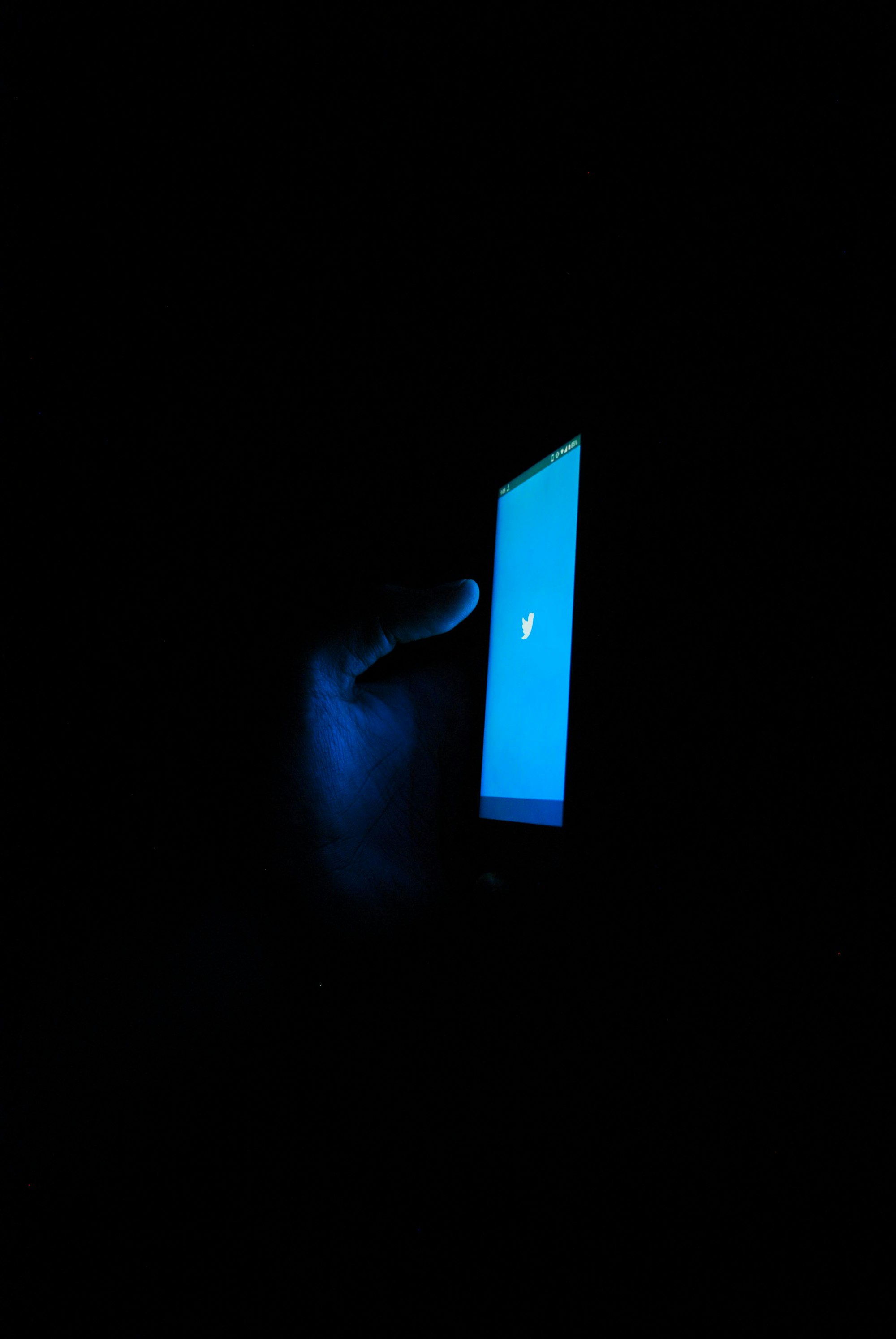Due to the proliferation of mobile phones with built-in cameras, the volume of information on potential Rome Statute crimes perpetrated by oppressive regimes has risen exponentially. However, as was highlighted as far back as 2017 in a report by Global Rights Compliance LLP (GRC), a law firm founded by influential human rights lawyer Wayne Jordash QC, this exponential rise in information has not necessarily translated into a rise of usable evidence.[1]
Investigations into such crimes often look to bring cases before international tribunals, or the International Criminal Court (ICC). Bringing such cases is crucial to transitional justice efforts around the globe. Transitional justice, defined at the UN as the process by which societies emerge from civil conflict and human rights abuses, require both truth-seeking efforts, and accountability for those responsible in order to reinvigorate the rule of law for persecuted populations.[2] Being able to use all available information to ensure successful prosecutions is thus a key issue.
The November publication of Washington D.C-based Public International Law and Policy Group (PILPG)’s needs assessment identified a number of current issues with digital evidence in meeting the evidentiary standards of the ICC. The report highlighted that these standards are complex, and thus without proper training, digital information obtained by grassroots documenters can have problems being used in court. The report proposed developing digital tools to aid human rights documenters in meeting these standards.[3]
Issues with admissibility have become even more pronounced during the COVID-19 pandemic, where investigations by civil society organisations into atrocities and crimes committed by oppressive regimes are more difficult to conduct due to travel restrictions.[4] Indeed, more than ever, small grassroots human rights defenders (HRDs) are the ones who document the acts. HRDs have varied levels of training and data literacy, and can have limited resources, but ensuring their documentations meet evidentiary standards is needed to hold human rights abusers to account.[5]
What are Rome Statute crimes?
The ICC is one of the key judicial mechanisms for transitional justice and has the power to charge leading individuals in regimes with one of the four crimes under the Rome Statute (perhaps soon to be five, with the recent attempts to amend the Statute to include ‘Ecocide’). These crimes are outlined in the Statute as being, a) Genocide, b) Crimes against humanity, c) War crimes and d) Crimes of aggression.[6] In order to establish these crimes, vast amounts of testimonial and physical evidence are often collected, but with the increase in smartphone usage, documentary evidence, such as footage recorded or pictures taken, are growing in importance.[7]
What Are The Current Issues With Admissibility?
Under rule 69(4) of the ICC Rules of Procedure and Evidence, judges can admit evidence by taking into account the probative value of the evidence and whether it may prejudice a fair trial.[8] The probative value of the evidence is where the admissibility issues often occur, since the court will consider two distinct factors. First, whether the evidence is authentic, or may have been tampered with.[9] Second, whether the evidence is reliable, that is, whether it is what it says it is.[10] Digital information has often failed to meet evidential standards in four key ways, as highlighted by the GRC report: Chain of Custody, Hearsay, Authentication and Preservation.[11]
Chain of Custody
Having a strong chain of custody requires that the handling of the digital data must be carefully documented from capture to presentation.[12] Failing to do this can lead to reliability issues. When videos and photos are directly uploaded to the internet purporting to show crimes, the ease with which these may be fabricated has meant that this information is often largely relegated to the role of corroborating stronger evidence or to provide general context, if admissible at all.[13] Even when data collected by HRDs on the ground can show a careful documentation of chain of custody, there is still the danger that a lack of encryption when storing the data or the use of cloud storage, will raise concerns that this chain has been broken, since it could have been tampered with in the intervening period between being sent and being received.[14]
Solutions to this have been suggested, such as the automatic upload of video and photo evidence to a secure centralised server, such as used by the tool eyeWitness.[15] This method of direct transfer of documented evidence appears to radically simplify the chain of custody, making data much more viable as evidence before the ICC. However, the PILPG report does point out two key issues with this: the maintenance of the server and the fact that the HRDs then have access issues to their own collected evidence.[16]
Hearsay
Hearsay refers to statements which are related by a documenter, of things which they personally did not witness. This may occur when digital evidence is submitted anonymously, perhaps because the HRD wanted to maintain secrecy.[17] The statements are typically relayed by a grassroots organisation to a larger human rights organisation, which then analyses it and presents the case to the ICC, meaning significant distance between the original witness and the final piece of evidence. The ICC has previously only admitted hearsay evidence to the extent that it corroborated other evidence, and so the admissibility of anonymous documentations, collected by human rights organisation, may be compromised.[18]
The PILPG report suggests that an app, or recording tool, which allows direct capture may also remedy this issue, since it would be much more closely connected to the originating source. The GRC report backs this up, noting that a complete chain of custody, and detailed log of meta-data to accompany the evidence, can strengthen it to overcome the sometimes-required level of distance between the anonymous HRD and the civil society organisation bringing the case to the ICC. However, the report also highlights a key trade-off between verifiability and human security. That is to say, the presence of a human rights documentation app may endanger a human rights documenter if found on their phone by government forces.[19]
Authentication
In an age where “deep fake” videos and photos can be created to appear genuine, the issue of authenticity also arises when admitting digital evidence to international criminal tribunals such as the ICC. This is particularly the case with open source investigations, which are acutely vulnerable to manipulation.[20]
The PILPG report highlights the need for digital evidence to have a detailed trail of metadata, and a complete chain of custody in order to admit such evidence. Again, it seems as if apps, which directly upload from the phones of documenters, would be of greatest assistance here, since deep fakes are harder to use when there is a concise and secure record from the capture of the information to the end.
However, as before, a crucial problem is that the more verifiable an app becomes, with the associated meta-data trail, the more chance there is of governments being able to identify the recorder on the ground. This is something developers looking to help document evidence for human rights proceedings have found to be incredibly complex, leading many grassroots NGOs to view such apps as a security risk, and diminish their uptake.[21]
Emerging technologies such as blockchain may have a role to play in solving this issue. Certification through pseudonymised distributed ledger technology has the power to render the recorder at least pseudonymous while also identifying the material as genuine.
Preservation
Finally, digital evidence also presents preservation challenges. If the data is stored without encryption, or transmitted without encryption, it leaves open questions of authenticity, and potentially breaks the chain of custody, and may be rendered inadmissible. The PILPG report suggests that the importance of secure digital archiving will be crucial to preserving the evidentiary value of digital evidence for use in future criminal tribunals.
A secondary issue in this regard is the sheer volume of data that is available, given the proliferation of smartphones with cameras. It has been suggested that machine learning may make the sorting and archiving process of this data easier, but techniques such as Natural Language Processing (NLP) have been highlighted as problematic due to the lack of technology that incorporates the languages of victims, especially regional dialects, in which interviews may be conducted.[22]
The Gap between Digital Evidence and Admissibility: A Need for Solutions
Our world is on camera more than ever but turning that deluge of information into an increase of verifiable evidence that stands up in pre-trial admissibility hearings at the ICC is crucial to increasing accountability and deterrence. Lawyers and developers have the ability to resolve these issues and empower grassroots HRDs to document in a way that is easy to use, secure, and also protective of those documenting, and direct upload apps seem the emergent solution, but must be balance with a need to protect HRDs on the ground and work closely with them to build bespoke solutions.
Bibliography
Eyewitness <www.eyewitness.global/welcome> accessed 12 December 2020
Finalized draft text of the Rules of Procedure and Evidence. Addendum to the Report of the Preparatory Commission for the International Criminal Court, UN Doc. PCNICC/2000/INF/3/Add.1 of 12 July 2000.
Global Rights Compliance LLP, ‘Standards of Digital Evidence’ (2017), 7 <www.globalrightscompliance.com/uploads/84f9281491a3a444312a0fed594157df.pdf> accessed 12December 2020
PILPG, Human Rights Documentation by Civil Society – Technological Needs, Challenges, and Workflows (2020), 46 <static1.squarespace.com/static/5900b58e1b631bffa367167e/t/5fb58bcb67862d7d964cf27a/1605733350976/PILPG+-+HR+Doc+Solutions+-+Assessment+Report.pdf> accessed 12 December 2020
Rome Statute (adopted 17 July 1998, entered into force 1 July 2002) 2187 UNTS 38544 (Rome Statute) art 5
UNSC, ‘United Nations Approach to Transitional Justice’ (2010), 2 <www.un.org/ruleoflaw/files/TJ_Guidance_Note_March_2010FINAL.pdf> accessed 12 December 2020
[1]Global Rights Compliance LLP, ‘Standards of Digital Evidence’ (2017), 3 <www.globalrightscompliance.com/uploads/84f9281491a3a444312a0fed594157df.pdf> accessed 12 December 2020
[2]UNSC, ‘United Nations Approach to Transitional Justice’ (2010), 2 <www.un.org/ruleoflaw/files/TJ_Guidance_Note_March_2010FINAL.pdf> accessed 12 December 2020
[3]PILPG, Human Rights Documentation by Civil Society – Technological Needs, Challenges, and Workflows (2020), 40 <static1.squarespace.com/static/5900b58e1b631bffa367167e/t/5fb58bcb67862d7d964cf27a/1605733350976/PILPG+-+HR+Doc+Solutions+-+Assessment+Report.pdf> accessed 12December 2020
[4]ibid. 44
[5]ibid. 47
[6]Rome Statute (adopted 17 July 1998, entered into force 1 July 2002) 2187 UNTS 38544 (Rome Statute) art 5
[7]Global Rights Compliance LLP, ‘Standards of Digital Evidence’ (2017), 1 <www.globalrightscompliance.com/uploads/84f9281491a3a444312a0fed594157df.pdf> accessed 12December 2020
[8]Finalized draft text of the Rules of Procedure and Evidence. Addendum to the Report of the Preparatory Commission for the International Criminal Court, UN Doc. PCNICC/2000/INF/3/Add.1 of 12 July 2000.
[9]Global Rights Compliance LLP, ‘Standards of Digital Evidence’ (2017), 6 <www.globalrightscompliance.com/uploads/84f9281491a3a444312a0fed594157df.pdf> accessed 12December 2020
[10]ibid. 6
[11]ibid. 6
[12]PILPG, Human Rights Documentation by Civil Society – Technological Needs, Challenges, and Workflows (2020), 66 <static1.squarespace.com/static/5900b58e1b631bffa367167e/t/5fb58bcb67862d7d964cf27a/1605733350976/PILPG+-+HR+Doc+Solutions+-+Assessment+Report.pdf> accessed 12 December 2020
[13]Global Rights Compliance LLP, ‘Standards of Digital Evidence’ (2017), 7 <www.globalrightscompliance.com/uploads/84f9281491a3a444312a0fed594157df.pdf> accessed 12December 2020
[14]PILPG, Human Rights Documentation by Civil Society – Technological Needs, Challenges, and Workflows (2020), 67 <static1.squarespace.com/static/5900b58e1b631bffa367167e/t/5fb58bcb67862d7d964cf27a/1605733350976/PILPG+-+HR+Doc+Solutions+-+Assessment+Report.pdf> accessed 12 December 2020
[15]<www.eyewitness.global/welcome> accessed 12 December 2020
[16]PILPG, Human Rights Documentation by Civil Society – Technological Needs, Challenges, and Workflows (2020), 66 <static1.squarespace.com/static/5900b58e1b631bffa367167e/t/5fb58bcb67862d7d964cf27a/1605733350976/PILPG+-+HR+Doc+Solutions+-+Assessment+Report.pdf> accessed 12 December 2020
[17]ibid. 34
[18]Global Rights Compliance LLP, ‘Standards of Digital Evidence’ (2017), 11 <www.globalrightscompliance.com/uploads/84f9281491a3a444312a0fed594157df.pdf> accessed 12December 2020
[19]PILPG, Human Rights Documentation by Civil Society – Technological Needs, Challenges, and Workflows (2020), 46 <static1.squarespace.com/static/5900b58e1b631bffa367167e/t/5fb58bcb67862d7d964cf27a/1605733350976/PILPG+-+HR+Doc+Solutions+-+Assessment+Report.pdf> accessed 12 December 2020
[20]Global Rights Compliance LLP, ‘Standards of Digital Evidence’ (2017), 7 <www.globalrightscompliance.com/uploads/84f9281491a3a444312a0fed594157df.pdf> accessed 12December 2020
[21]PILPG, Human Rights Documentation by Civil Society – Technological Needs, Challenges, and Workflows (2020), 46 <static1.squarespace.com/static/5900b58e1b631bffa367167e/t/5fb58bcb67862d7d964cf27a/1605733350976/PILPG+-+HR+Doc+Solutions+-+Assessment+Report.pdf> accessed 12 December 2020
[22]ibid. 45







